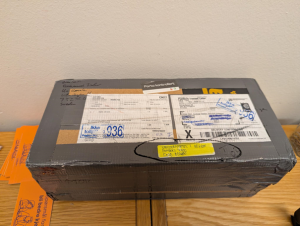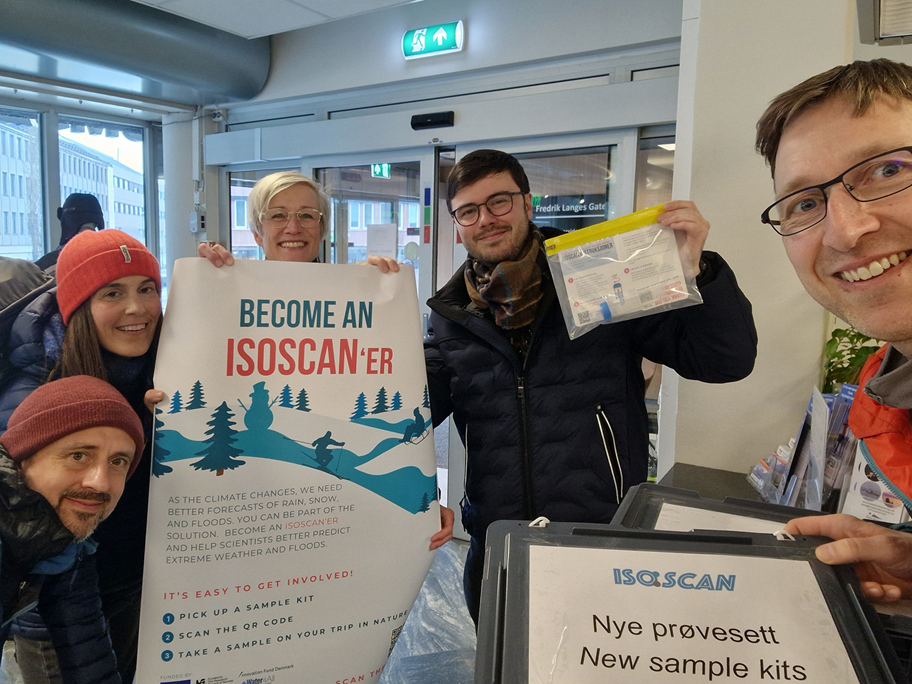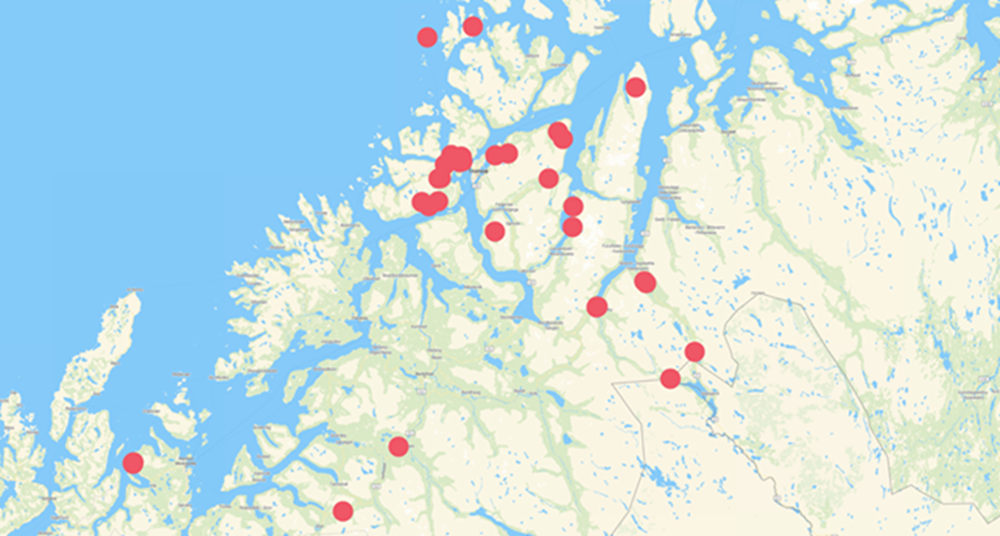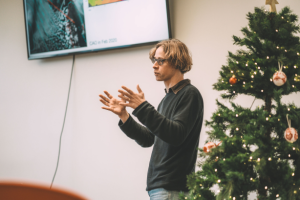Every autumn, the Swedish University of Agricultural Sciences (SLU) collects water samples from over 800 lakes across Sweden. These samples are analyzed for different chemical elements, such as oxygen and nutrients. Benjamin, a member of the ISOSCAN team at Uppsala University, realized the lake water samples had never been analyzed regarding their stable water isotope composition. Analyzed samples were usually simply discarded, but since 2021, Benjamin kept some of the lake water for later stable isotope analysis. For the ISOSCAN project, measuring these samples will provide valuable information on the spatial variability of the isotopic composition of Sweden’s lakes.

The lost package was finally found! (photo: UiB)
All ISOSCAN water samples are analyzed for stable water isotopes at FARLAB, University of Bergen. So, we needed to ship 300 small glass bottles from Uppsala University, Sweden, to Bergen, Norway – seems simple enough! On 13 November 2024, the carefully packaged samples were sent off by regular mail. A tracking update later showed that the package had arrived at Norwegian customs and, by 29 November, was supposedly waiting for pickup. However, no notification ever reached the recipient, and the shipping company had no record of the parcel’s whereabouts. Apparently, the parcel was too big for the letter box (surprise!) and went on hold for a later delivery attempt.
December passed. January 2025 arrived. The samples were still missing. A lost parcel inquiry was launched, requiring us to estimate the package’s value. A tricky question: What is the value of lake water? One cubic meter (1000 liter) of drinking water costs roughly 45 Swedish kroner (https://www.uppsalavatten.se/ ). Accordingly, 300 ml of sample water are only worth 0.01 kroner – basically worthless. Yet just the effort that went into collecting and preparing the samples for analysis is huge, and with samples being irreplaceable, they were worth more than gold to us scientists.
Then, on January 14, just as hope was fading, an email arrived from Andrew: The package had finally been tracked down and had been safely delivered. Relief washed over us! What went wrong is still a mystery, but who cares – time for a victory dance! Now that we have regained the samples, we are busy analyzing at FARLAB. We are already very curious about the results – what will the measurements reveal about the water movement in Sweden’s lakes?
Lessons learned:
- Never ship critically important items around Black Friday.
- If samples are that important, deliver them in person.
- Keep some extra water in a backup storage. Thanks to funding from the ISOSCAN project, this is done since 2024
Science is an adventure, and sometimes, even a lost parcel can be part of the journey.
GIF animation : packing water sample bottles in the lab
Text: Benjamin Fischer/Uppsala University





